The evolution of animals as a series of technological breakthroughs
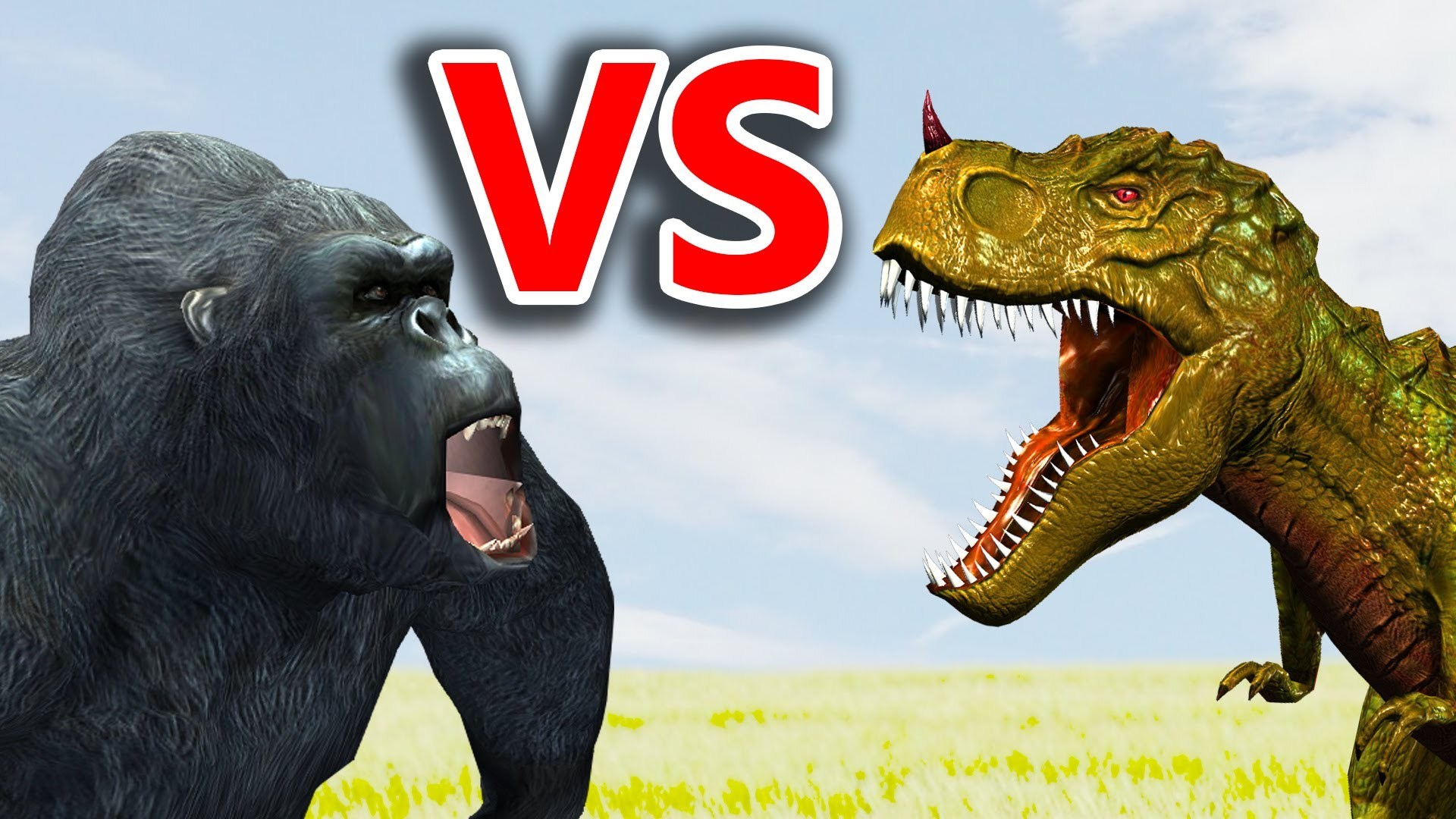
In school years, the study of various classes of animals was perceived as heavy duty. That little that was learned in school was safely forgotten, and until recently, I could hardly have ranked a snail or a leech in one or another class - like, probably, most of the regulars of Habr and GT. And why do you need to remember that?
But recently, the book of Nikolai Aleksandrovich Bernshtein , written in the 40s of the XX century and published only at the end of the last century, fell into the hands of . The title of the book is On Agility and Its Development . The book is full of all kinds of discoveries, and I recommend reading it to everyone and everyone.
And in this short article I’ll try to briefly outline the author’s view on how the evolution of the animal world was the result of a series of key “technological breakthroughs” aimed at the development of movements. I really hope that this essay will help draw attention to the scientific heritage of the brilliant physiologist N. A. Bershtein.

So, let's start with the classification of animals. Bernstein divides them into 7 main classes:
- The simplest are unicellular, microscopically small animals.
- Intestinal (e.g., coral polyps, holothurians, sponges, sea lilies).
- Echinoderms (e.g. starfish).
- Worms (e.g. earthworm, leech, tapeworm).
- Soft-bodied , or clams (e.g., snail, cuttlefish, oyster).
- Arthropods (insects, crayfish, spiders, centipedes).
- Vertebrates (fish, frogs, lizards, birds, animals).

It is believed that the simplest (class 1) were the first representatives of the animal world, and in ancient times they inhabited the warm broth of the world's oceans, in which numerous chemical elements and compounds were dissolved. Their organisms consisted of only one cell, which itself made its way into life, moving its flagella or pseudopods and working "for one" in relation to nutrition, and movement, and self-preservation, and reproduction.
First upgrade: cell differentiation and chemical interface
The next step in the development of animals was the emergence of multicellular organisms. A group of cells is already able to “surround” the prey and by joint efforts create a chemical environment that will split single (and not only) cells trapped into “edible” elements.
This is exactly how the representatives of the 2nd and 3rd classes of animals act. Intestinal and echinoderms are round-symmetrical, inactive creatures.
From the class of coelenterates, many lead completely the lifestyle of plants, growing all their lives in one place. Their digestive cavity also has the appearance of a bag, and they use both for food and for defecation with the same hole. Echinoderms already have a through digestive canal.

But from the point of view of evolution, a much more important feature of multicellular organisms is that their cells cannot therefore remain equal to each other, because some of them are located in the depths of the body, and others on the surface. There is a specialization of cells: the bodies lying on the covers adapt to the “service” of irritability and sensitivity, others, the deeper ones, mainly to shape changes, to “contractility”, to ensure primitive movements . These movements, even if erratic and not aimed at anything, helped multicellular simply because moving animals had better chances in the struggle for life than completely motionless ones.
Each physiological process is associated with any chemical transformations in the cell. Receptive cells of the body surface, which acquired increased irritability, also secreted some chemical metabolic products from themselves during their activity.
It is clear that those individuals in whom, perhaps purely by accident, muscle cells were excitable from the action of receptive substances that penetrated into them, received a serious, almost decisive, biological advantage over others. While these latter were only capable of spontaneous movements, sometimes the former were simply useless, and sometimes the former were out of place, individuals of the new “brand” could react to external irritations (for example, turn to face prey or back to danger) .
This new phenomenon on Earth - reactivity - was initially indiscriminate, indiscriminate, and diffuse, as they say in physiology. Even now, we can observe similar diffuse irritability and reactivity in various lower organisms: until you touch it, it lies quietly; touch - the general disordered movements of the body begin, the more significant, the stronger the irritation.
This is how the first chemical substances that stimulate the muscle in nature — the primitive intermediaries between the receptive surface of the body and the muscles — were revealed. In physiology, these substances are called mediators - mediators, and to this day they play a very important role for movements in the highest organisms (including Homo Sapiens). Each time, when we walk or perform gymnastic exercises, we arbitrarily strain one muscle or another, a microscopically small drop of substance is released at its nerve endings, which is 500 million years old.
In subsequent generations of organisms, gradually began to separate channels, specially adapted for the delivery of chemical mediators. However, these “waterways of communication” had not yet managed to take shape and provide at least some selective addressing of mediators to certain muscle groups; another event occurred whose biological significance was immeasurably greater.
Electrical Interface Development
Each chemical phenomenon has its own electric “flare”, accompanied by various oscillations of the electric potential.
It just so happened (in the order of random inborn changes, or something like that) that in some instances their muscle cells were excitable not only from the direct chemical effect of the mediator, but also from the electric satellite alone of the latter - from that elusively small electrical vibration, which he was always accompanied.
The advantages of the electrical signal transmission method over the chemical one are obvious. First, the wave of an electric pulse has a much greater speed than a solution that oozes along the interstitial slots, which means that it allows its holder to react many times faster. Secondly, an electric stimulating impulse carries at least some possibility for its “routing” to one or another muscle group, while a fluid containing a mediator necessarily washed the entire body. It is not surprising that the “telegraphic” principle of the transmission of exciting impulses, newly discovered by nature, began to energetically gain a commanding position.
Gradually isolate the fibers, which showed the best conductivity for biocurrents. Such fibers were long processes of cells. Specializing in the transmission of impulses (it is time to begin to call them nerve impulses ), the fibrils formed networks inside the body, allowing them to transmit signals to the necessary parts of the body.
But at this stage, the nerve networks were responsible only for data transfer, like telegraph poles.
Separation of the mouth from the anus
An important circumstance was the appearance on the Earth of elongated, sausage-like animal forms. Those animal classes (2nd and 3rd according to our classification) that have been described so far have round-symmetrical shapes, with a mouth opening in the middle.
The shape of the body of the lower of them, intestinal, less defined; it is, in fact, single-hole bags, which forces them to replace the body's natural administration with vomiting. The echinoderms that are more advanced in their development (through the digestive canal) have a radiant structure, and around the central mouth they have five symmetrical processes (rays in starfish, lemon-like lobules and in sea urchin, etc.).
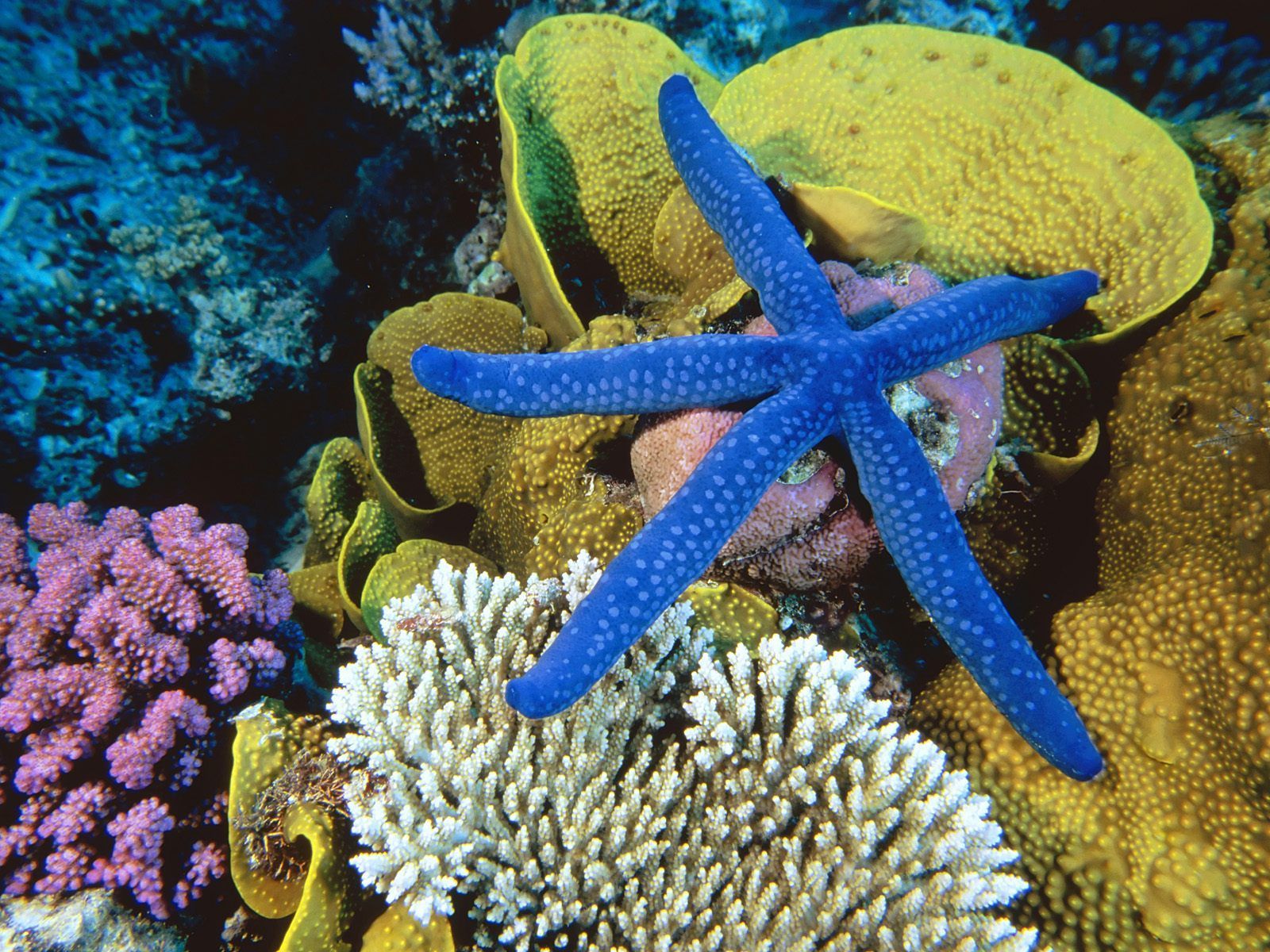
In their place, oblong animals of classes 4 and 5 begin to appear (later worms andmollusks ) with a digestive tube extending over the entire length of their body, with a mouth opening at one and anus at the other end. In the mouth, that was the whole point.

It is clear that the oral end of the body is its active end. He is looking for food, he is the first to face prey, the first - and danger. He usually moves ahead.
The front end of the body is more important than any other point of it, subtly and in a timely manner to feel the properties of what it touched, to which it crawled. But in addition to the aggravation of ancient types of sensitivity (tactile, temperature, taste, chemical), which can be combined under the general name of “contact” or “sensitivity of direct contact”, qualitatively new, more advanced types of sensory organs begin to develop at the front, mouth, and end.
It is convenient for new receptors to appropriate, using the prefix widely adopted in the technical language, the name of telereceptors. By analogy of this word with terms such as telephone, telegraph, television, etc., it is easy to understand its meaning: we are talking about long-range or long-range receptors.
Each of the ancient types of contact receptors, mutating, gave rise to one of the improved long-range. The organ of chemical sensitivity - taste - gave rise to the chemical telereceptor - the organ of smell. The tactile sensitivity of the front end, thinning, turned into sensitivity to frequent and minor shocks, or vibrations transmitted from afar through the environment: to the hearing organ, the “hearing” of sounds, which are nothing more than vibrations, or vibrations, water or air .
Finally, temperature contact sensitivity was first transformed into susceptibility to radiant heat, and then to radiant energy of the most powerful part of the solar spectrum - light energy. From here, thus, vision arose.
With the advent of telereceptors (perceived), the surrounding world has become much larger in volume than the animal itself. Now it was possible to see, smell, hear prey or danger from afar, and, accordingly, move to it or from it.
The possession of telereceptors has generated a number of new needs for the body, such as:
- coordination of movements of various parts of the body so that you can move in a given direction as a whole;
- a mechanism for planning actions or movements so that it is possible to develop tactics for attacking, or self-defense from, an object detected at a distance (ahead of time);
- the beginnings of memory , if only in order to remember the plan of action mentioned above.
To meet the above needs, animals have accumulated nerve cells, called nerve nodes, or ganglia, which have taken on the functions of coordination, planning and memorization.
Naturally, these centers are best suited to be placed at the front end, so to speak, on the captain’s bridge of the whole body, where all the teleceptors are located, and where the most open view is from.
In this way, the mouth end was first, by the inevitable logic of things, the front end of the body, and then, being equipped as the front with high-grade telereceptors, it became the head end of the body and, finally, its main end.
Paradoxically, it was the separation of the mouth from the anus that led to the eyes, ears, nose and brain.
Looking ahead, we note that the physiological characteristics of reptiles almost led to the appearance of a second brain in them, located precisely in the area of the anus. But about this - read on.
How anisotropic discs changed the world
Before the advent of anisotropic disks, the ancient animal kingdom was slow and unhurried. The muscles of animals in those days were capable of only weak and slow movements. But then a new element appeared that made possible the formation of a completely new type of muscle.
Anisotropic discs are special cells that are capable of lightning-fast contractions under the influence of electric current. It is because of this that the wings of a mosquito or flies are able to make several hundred movements per second.
Another property of anisotropic discs is the high mechanical power generated by their reduction. At the same weight, anisotropic discs produce thousands of times more power than cells of older smooth muscles.
Anisotropic disks so successfully solved the problems of speed and power that the bodies of organisms, contrary to the usual order of things, began to adapt in every way to the use of anisotropic disks (and not vice versa, i.e. did not wait until the anisotropic disks adapted to the characteristics of the body).
Indeed, anisotropic discs were so powerful and fast that ancient soft-bodied organisms could simply break when used. Therefore, first of all, measures were taken to smooth out the explosive effect of anisotropic disks.
First, the explosive effect of the action of anisotropic disks is compensated by the fact that in the muscles of animals and humans, anisotropic disks alternate with elastic cells of the tendon tissue (iso-elements), which play the role of shock absorbers. A long chain of alternating anisotropic and isotropic cells forms muscle fibers, which are precisely due to this alternation of cells that are called striated muscle.
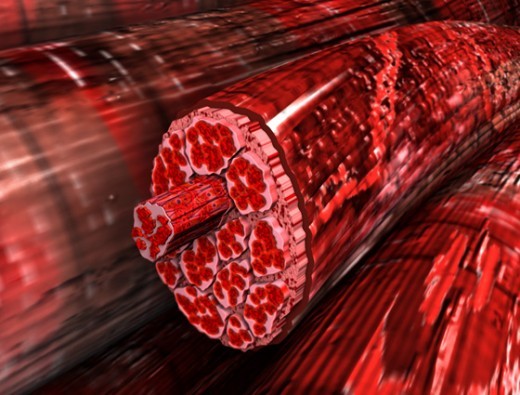
Secondly, each fiber of the motor nerve is spliced by its branches into a pack of 10 - 100 muscle fibers, which, obviously, under the influence of its impulses can move only in the same way and everything is the same. This bundle of muscle fibers is called myon.. Each muscle of our body, depending on its size, consists of several tens or hundreds of ions.
Thirdly, each anisotropic disk shrinks for a thousandth of a second, and then it needs to “rest” for a time that lasts 3-4 times longer than the reduction. Therefore, the nervous system sends to the muscles a whole series of excitation pulses with a frequency of 50-200 hertz, so that the previously begun action of the muscles can be continued.
Fourth, all muscle cells are placed in a thick and viscous fluid called sarcoplasma. This fluid, in turn, provides smooth muscle movements. Note that the exceptional speed of movements of some representatives of the fauna (for example, the same flies) is associated with a negligible amount of sarcoplasm in their muscles.
Arthropods versus Vertebrates
So, there is a powerful and fast source of driving force - striated muscle.
According to Bernstein, the matter went as if in a great competition announced by life for the best equipment for the striated muscle, the first prize was divided between two different projects. Both of them, upon initial consideration, seemed to equally equally well and witty solve the problem posed by the competition, although they solved it in deeply different ways.
One of the projects was under the motto Arthropoda (arthropods), the other under the motto Vertebrata (vertebrates). Both projects proceeded from the striated muscle as something “already given”, and both combined it with rigid, articular-mobile skeletons; both obviously belonged to the “technical conditions” of the competition.
Arthropods created rigid external skeletons like knightly armor and placed striated muscles in them. All solid elements of armor - joints - are interconnected with one degree or another of mobility. Hence the name of the class: arthropods.
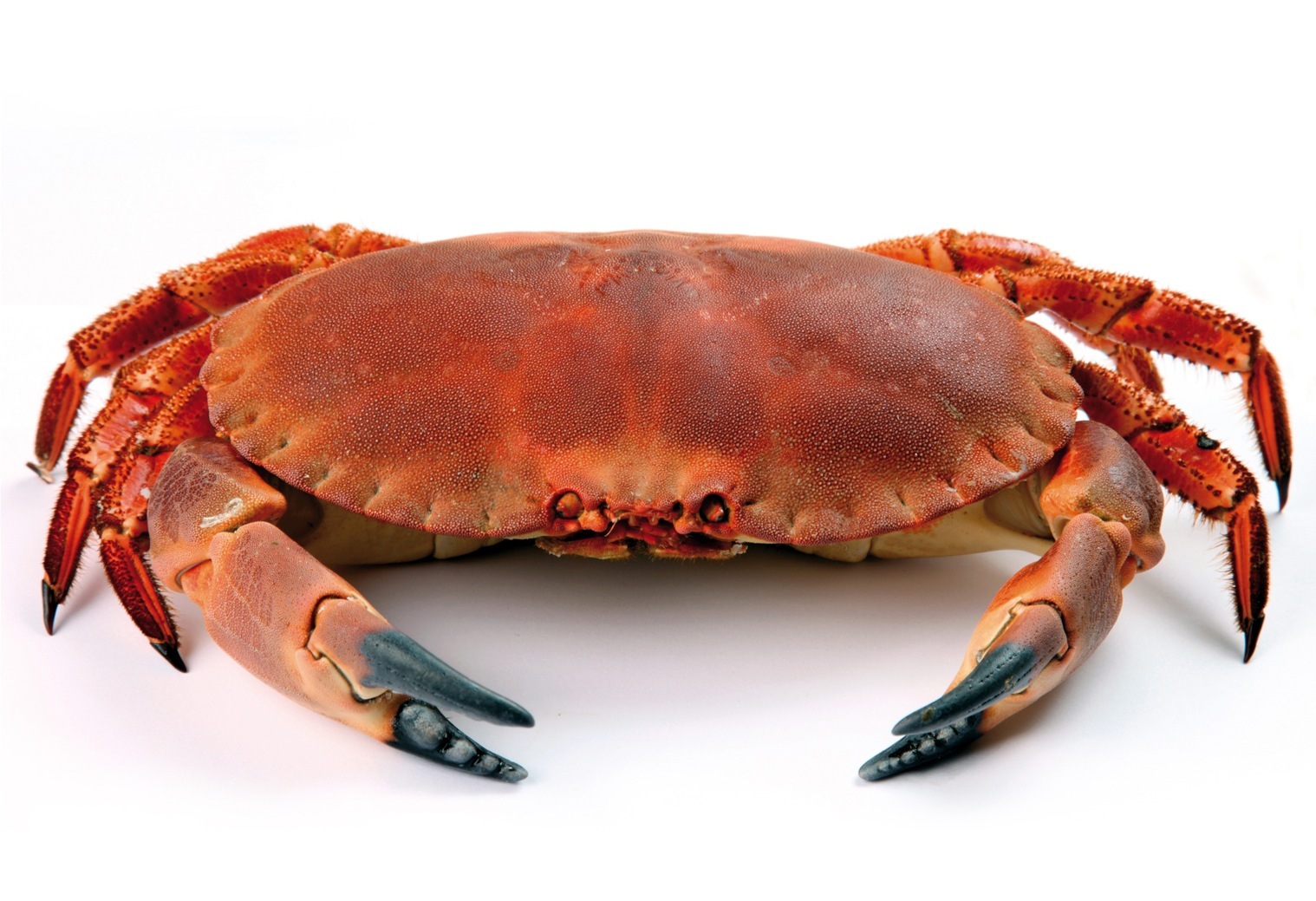
Vertebrates went the exact opposite way. They placed a solid skeleton inside the body, “wrapping” it with muscles on all sides. The central element of the skeleton is a spine consisting of individual segments. Its structure is maintained due to the "winding" of the muscles pulling each vertebra simultaneously in different directions.
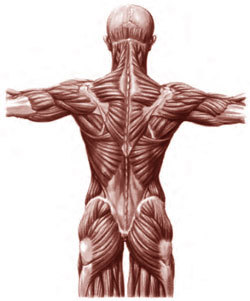
The advantage of the arthropod project was that the structure of their body simultaneously solved 2 additional (besides motor) tasks: it provided the body with armor, and at the same time provided stability. In fact, even dead insects maintain a stable body position, because it does not require muscle tension.
The design of the vertebrates obviously did not have the indicated advantages, since it did not provide for initially rigid armor and required constant muscular tension to maintain stability. After all, as you know, any vertebrate, when killed, must fall. But these shortcomings were more than compensated by additional degrees of freedom in movements and flexibility.
According to Bershtein, it was the limited movement of arthropods that led them to an “evolutionary impasse”, since they did not have the need to develop an “administrative apparatus” for complex movements. Although, of course, complex and superbly organized forms of existence of some insects, such as bees or termites, cannot but surprise us.
At the same time, new degrees of freedom in movements that appeared in vertebrates created the prerequisites for the development of their higher nervous system.
Be that as it may, both projects have been successfully implemented, and currently represent the dominant life forms on our planet.
Where did the dinosaurs go?
The final part of our essay is devoted to the curious point of view of Bershtein on the cause of the extinction of dinosaurs.
As you know, the first vertebrates were ancient fish. Their representatives can still be found in the oceans - sharks, stingrays, etc. From later fish, they are distinguished by the absence of bone skeletons inherent in ruffs, pikes and perches.
Amphibians and amphibians (frogs, newts) were the first among those vertebrates that climbed to land. Clear business, for them one more "upgrade" was required: the development of limbs, without which it is not very much possible to crawl by land.
From amphibians and amphibians subsequently descended reptiles that reigned on land for extremely long, reaching their peak in the Jurassic period. Once reptiles existed on the globe in a huge number of orders and species, owning the surface of the water, and land, and air.
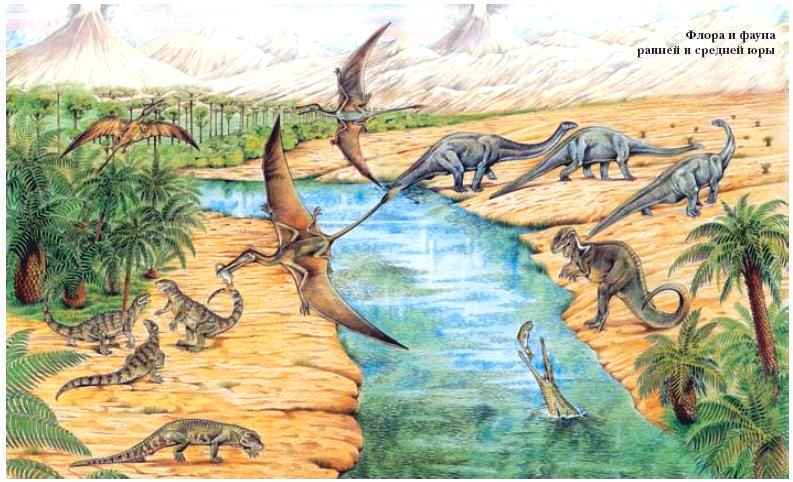
In our time, from all this abundance of reptiles only the remains survived, only four orders: lizards, turtles, snakes and crocodiles.
As you know, dinosaurs could not develop the brain. The reason for this, apparently, were the features of their physiology and size.
It is known and accurately measured that the speed with which the electrochemical excitation signal — the nerve impulse propagates along the nerve — is very different in cold-blooded and warm-blooded animals. An excitation wave runs through the frog’s nerve at a speed of 8-10 meters per second, and along the cat’s or human’s nerve at a speed of 100-120 meters per second.
And now we will make a simple calculation.
Imagine that someone bit a thirty-meter giant lizard behind his hind paw, and he, feeling pain, drew his paw or hit her offender. For the path of pain we have: a paw of 6 meters, a trunk of 10 meters, a neck of another 10 meters, a total of 26 meters, that is, three seconds one way. We put the same amount for the response motor order from the brain to the leg muscles; one needs to add at least a second to the reaction rate in the brain itself. As a result, it turns out that from the moment of the bite to the start of the reciprocal movement seven seconds elapse - a very long time, if you look at the second hand of your wristwatch and “endure” seven seconds, carefully following it.
Measurement of the surviving skeletons of the Jurassic and Cretaceous giant dinosaurs shows that they had a tiny head on their long powerful neck, which was also suitable for them in proportions like a mouse would suit us. And in this exorbitantly small head, most of it was occupied by the facial skeleton - a toothy mouth, while the share of the brain remained a very close, insignificant container. We will more easily understand this if we consider that an animal that would be forced to “ask” about all its movements in the brain and wait for answers for seven seconds would be unviable.
Obviously, the predominant part of their motor reactions proceeded under the control of the spinal cord alone. This gave a very significant shortening of the nerve path: seconds to two or three. Indeed, very many of these lizards in the spinal canal - the receptacle of the spinal cord - have swelling in the lumbar region and sacrum, where the nerves of the hind legs begin. This bloating suggests that in this place the spinal cord was enlarged, and very significantly: it was here even larger than the brain.
So, according to N.A.Berstein, it was the data transfer rate that played a decisive role in determining the outcome of the battle between the newly emerged class of mammals and reptiles.
A new, young class of mammals, warm-blooded, temperamental, with a very enriched brain, as well as motor means, turned out to be an insurmountable adversary for reptiles. Medium-sized, dexterous predators pounced on these slow-moving mountains of meat, as if purposely prepared for them, and quickly became obsolete by their truly predatory management.
In other words, dinosaurs did not disappear as a result of a meteorite or glaciers. They just gobbled up warm-blooded!
